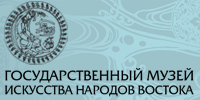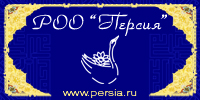Oriental Collection № 4/2013
Leshan, a photo essay by Svetlana Sysoyeva, opens the fourth issue of 2013. Leshan is a complex of buddhistic monuments in China.
 |
- Irina Chelysheva. The Himalayas’ Writ of Protection. The disastrous flood in the Himalayas in the summer of 2013 drew a wide response in India. They said that it was the gods’ punishment for those who had broken the sacred laws of the Himalayas. Indeed, the worship of nature has always acted as a writ of protection for this land.
- Yulia Ursul. Peering into a Man. Our magazine presents a series of graphic portraits of the Eastern people. Yulia Ursul, the artist, believes that the man’s face is his narration of himself, his life, his time, and the world around him.
- Marina Mongush. Going to Tsengel, Meeting Tuvans. The author has travelled to the district inhabited by the Tuvans in Mongolia. They have retained their traditional crafts, language, and lifestyle, they hold musical festivals and struggle to preserve the individuality of their ethnic group.
- Aleksey Ivanov. Visiting River Chenchus. The ethnographer’s notes on a little known tribe of North India. The most of the Chenchus live in the central region of Andhra Pradesh state. Not long ago they lived by hunting and gathering of honey and wood resin. In 1975 an act of state was issued proclaiming them «a primitive tribal group» in need of urgent aid.
- Olga Khizhnyak. The Metamorphoses of the White Elephant. In the tradition of Buddhism there is an iconographic motif «Purification of the White Elephant», which illustrates the main stages of the man’s spiritual life. The way to obtain disinterested sacrificial love begins with purification of one’s consciousness. That is what the Elephant symbolizes in this motif.
- Tatiana Solovyova. A Native Hindu Brought up as a Muslim. In medieval India there appeared an astonishing phenomenon — the junction of Hinduism and Islam. It determined the singular life of Kabir, who was born into a Hindu family and brought up by Muslims. In his poetry he spares neither Hindus nor Muslims, telling to all of them: «What is the use of your preaching sermons if you don’t prove them with your deeds?»
- Yulia Yershova. Little Clay Dogs from Huaiyang. Those who come in Huaiyang, a county town in the east of Henan province, China, visit the Taihaoling Temlpe. Here an annual festival is held to celebrate the birth of Fuxi, the divine progenitor. The folk songs tell how the goddess Nüwa, Fuxi’s sister and wife, created men and women of clay. To commemorate it the inhabitants of Huaiyang have an old custom to make little clay dogs — so-called «ninigou».
- Svetlana Uturgauri. Valides and Hasekis. Ottoman sultans, following the example of Byzantine emperors, attached importance to the cultural development of their capital. In Istanbul they built mosques surrounded by külliye complexes, which included libraries and social and charity institutions. This tradition was cherished in a great measure by women of the House of Ottoman — the wives (haseki) and the mothers (valide) of the sultans.
- Nellie Leshchenko. Nikolay Rezanov: vicissitudes of love and career. The romantic story of the Russian diplomat Nikolay Rezanov and the fifteen-year-old Spanish girl Concepción de Argüello became well-known in Russia thanks to the poem by Andrey Voznesensky and rock opera by Alexey Rybnikov. But the sources give evidence that the real story wasn’t so simple and so beautiful.
- Vladimir Belyakov. With Own Eyes. The author continues the theme of the article placed in the previous issue of our magazine. He tells about the first Russian coming to Egypt in the 18th century. They were always the same type of travellers — orthodox pilgrims going either to the holy places of Sinai or through Egypt to Palestine. But their notes became more trustworthy, diverse, and detailed than before.
- Yury Averyanov, Dmitry Zubov. The Misterious Forty Soldiers. Vasily Grigorovich-Barsky, the Russian traveller of the 18th century, cites in one of his books the text of the ordinance of the Ottoman sultan Selim I. That ordonance concerns the aid to the Xeropotamou Orthodox Monastery, which is situated on Mount Athos. Although the original document has not been found, the cited text is very interesting for containing the image of the Forty Martyrs which is equally close to Christianity and to Islam.
- Yury Zinin. Arabesques. The author’s notes on his travels over North Africa and the Middle East: the labyrinths of the Casbah — the medieval area of Algiers; the henna ornaments on women’s hands and feet which are still in fashion; the restored Russian monastery in Palestine.
- Mariam Emami. The Taste of Persia. The author presents, with many interesting details, the Iranian cuisine, which remains traditional despite the invasion of fast food.
- Anastasia Pogadayeva. Kimilsungia and Kimjongilia. Kimilsŏnghwa and Kimjŏngirhwa (called Kimilsungia and Kimjongilia in English) are flowers which were selected in honour of the North Korean leaders and named after them."
Our «Orientnet» section presents web resources on Mandala, the buddhistic symbolic image of the dwelling place of the gods.






